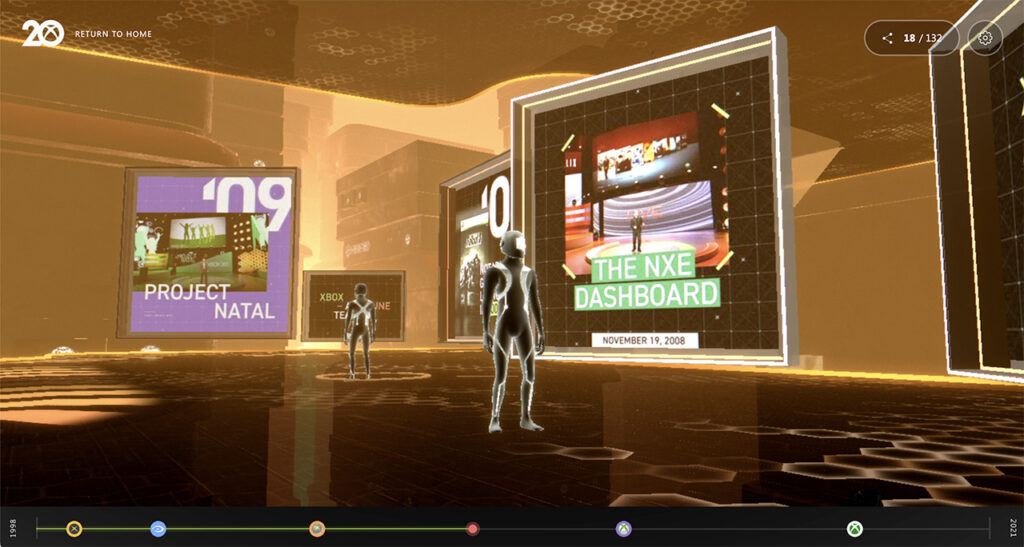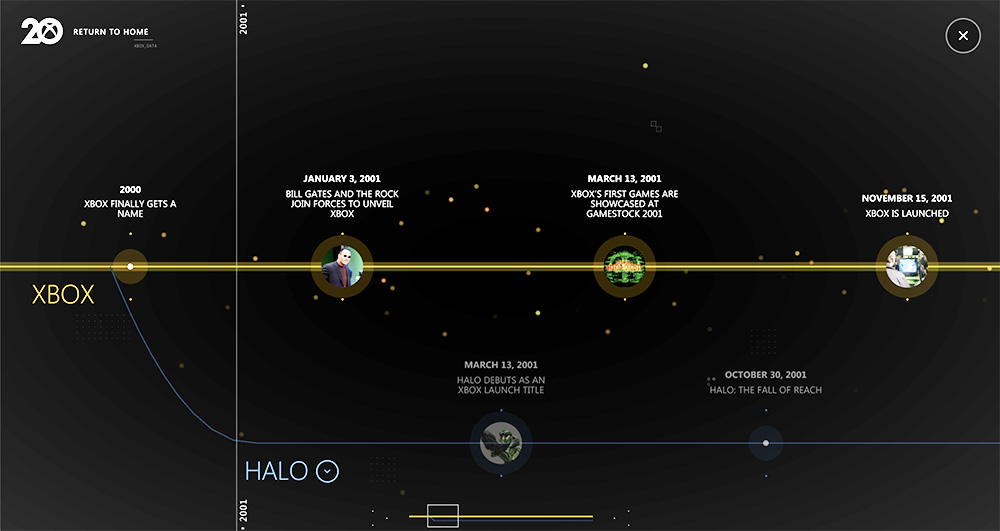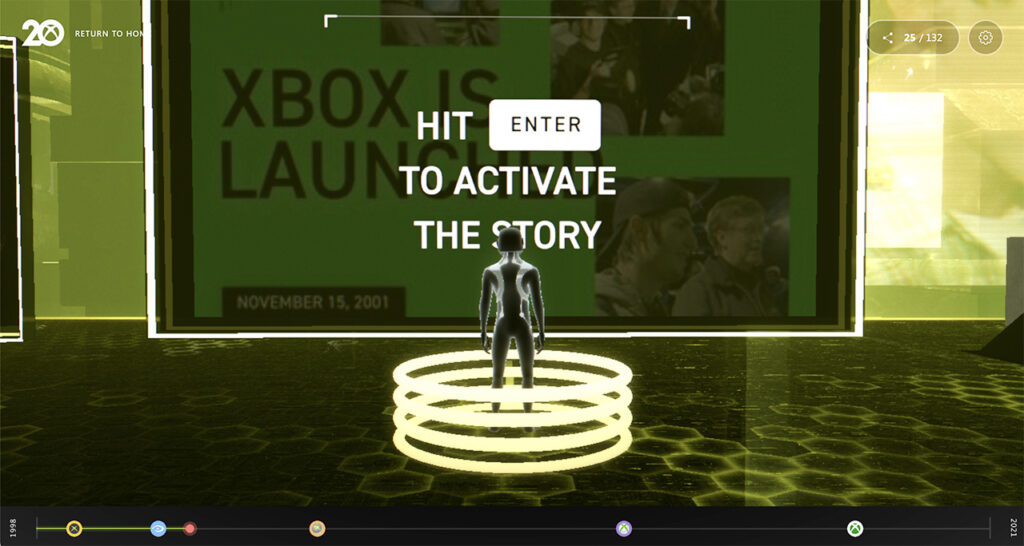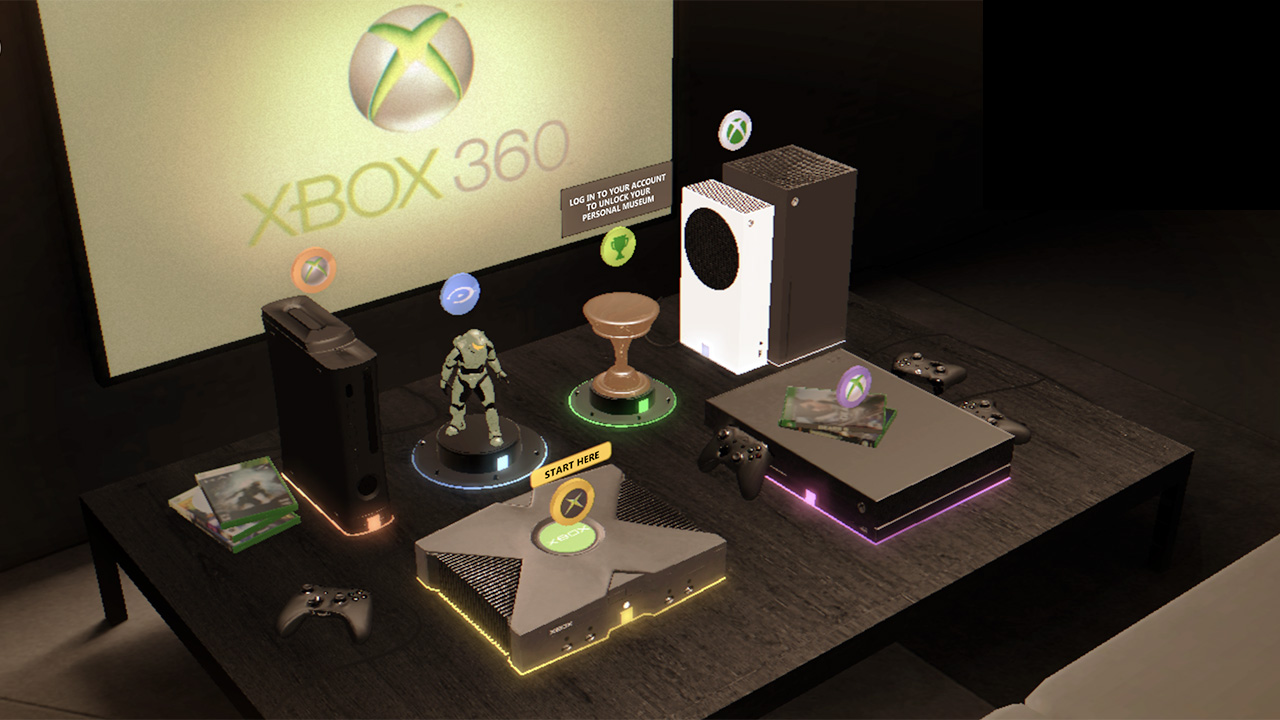In 2001, Microsoft launched the original Xbox console, then the only North American gaming console on the market. Twenty years on, while the Xbox would chalk up 24 million in worldwide sales, its successors from the XBox One to the Xbox Series X|S, in addition to the Xbox Live digital media service and games like Halo, would cement it as a gaming juggernaut. According to a recent study by GamingSmart, Xbox is more popular than any other console in the United States.
Now, on its 20th anniversary, Xbox is making the best of its standing in the gaming space by launching a museum dedicated to its storied history and key milestones.
What happened

After clicking through a welcome screen, visitors to the Xbox Museum are represented by avatars within virtual galleries. Image: Screenshot of the Xbox Museum
On November 15, Xbox unveiled the Xbox Museum, a virtual experience accessible online. Created in partnership with Active Theory, a digital production studio specializing in virtual and augmented reality, the experience details the brand’s history through five products: the Original Xbox, Xbox One, Xbox 360, the Xbox Series X|S, and a Halo character.
On the museum’s welcome screen, users can click on any of the above objects to enter that particular gallery. Once in, visitors, represented by avatars, can travel to various stations and “activate” stories, engaging with images and written content detailing game launches, technical advancements, and gaming soundtrack developments. At the moment, users can explore a total of 132 moments throughout Xbox history.

A timeline of Xbox’s history opens up images and editorials related to the company’s key milestones. Image: Screenshot of the Xbox Museum
The virtual museum also features a timeline at the bottom of the screen that allows visitors to navigate through Xbox’s history at a glance. The timeline currently ends on December 8, 2021, the release date of the new Halo Infinite video game.
Gamers logged into their Xbox accounts have an additional experience available to them: their personal museum, dubbed My Xbox Museum, which collects and displays their unique gaming history. And of course, there’s the option for visitors to share these gaming moments over social media.
Why it matters

The virtual experience sees Xbox tapping a museological format to reach new audiences and to signify its cultural impact. Image: Screenshot of the Xbox Museum
That the Xbox Museum is showcasing its history in a virtual, interactive, and gamified environment makes sense both for the brand and the 2021 moment. Just as cultural institutions have increasingly tapped video games as part of their programming — from the Birmingham Museum’s collaboration with Occupy White Walls to the Art Gallery of Ontario’s use of the Twitch platform — the Xbox Museum uses the museological format to to signify its cultural significance (of note, Xbox’s rival, Nintendo, already has a physical museum in the works) and connect with broader audiences.
The metaverse has also increasingly become a site for cultural experiences, offering organizations new avenues and opportunities to platform their offerings or exhibitions in unique, forward-looking ways. These projects further make for communal experiences: the My Xbox Museum feature invites individuals to review and share their own involvement in gaming culture, transforming gamers into active participants within the Xbox story rather than passive consumers.
What they said
“Twenty years of Xbox is a massive occasion, and we wanted to give the anniversary the attention it deserves. Given that the Xbox audience itself is familiar with 3D environments and gamification, an interactive museum was a great fit. The venue — or ‘microverse,’ as we refer to it — is a connected space designed for the community. Users join together in the same space as they explore the museum, making it memorable for all.” — Eddie Benson, Strategist, Active Theory



